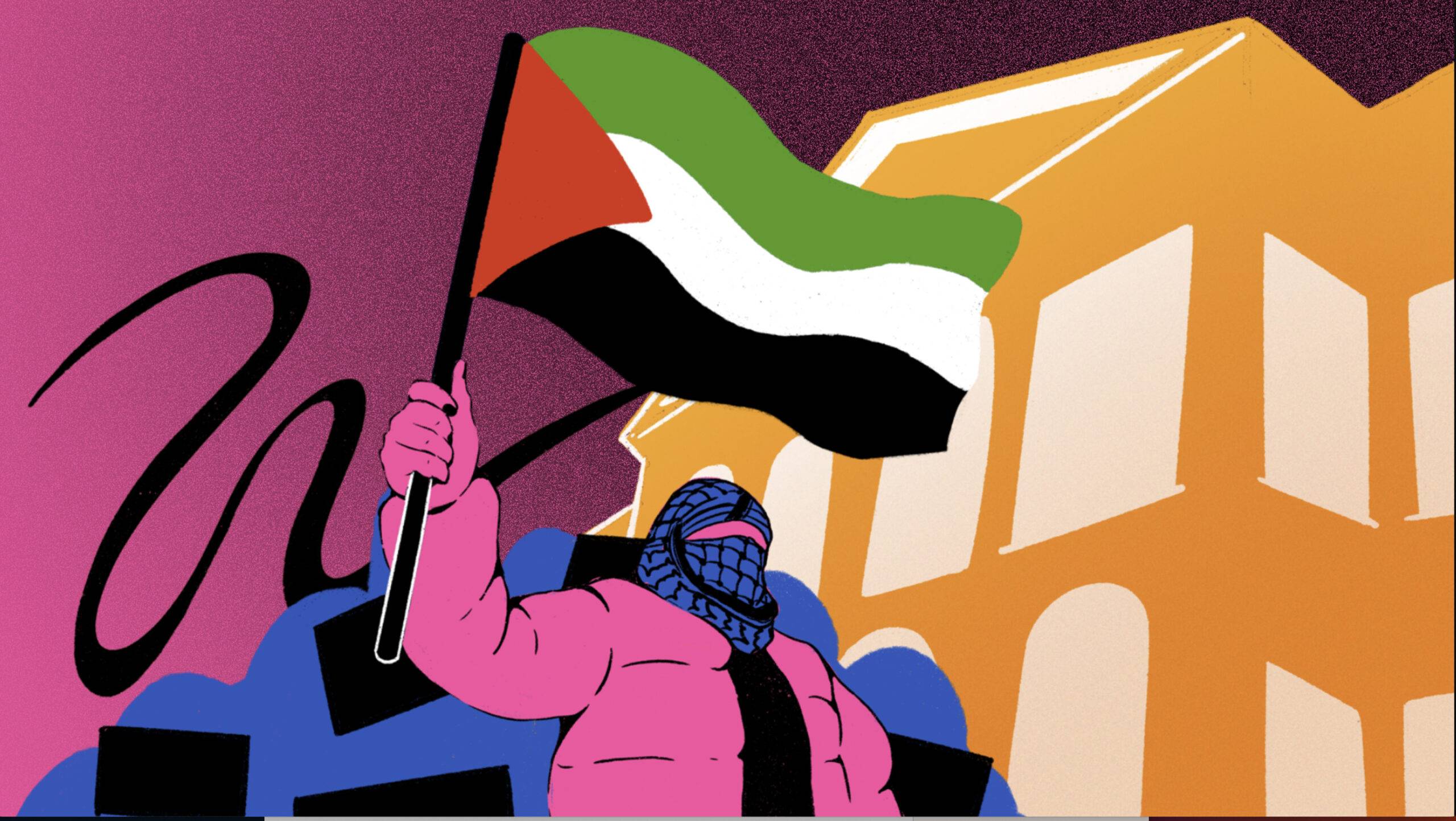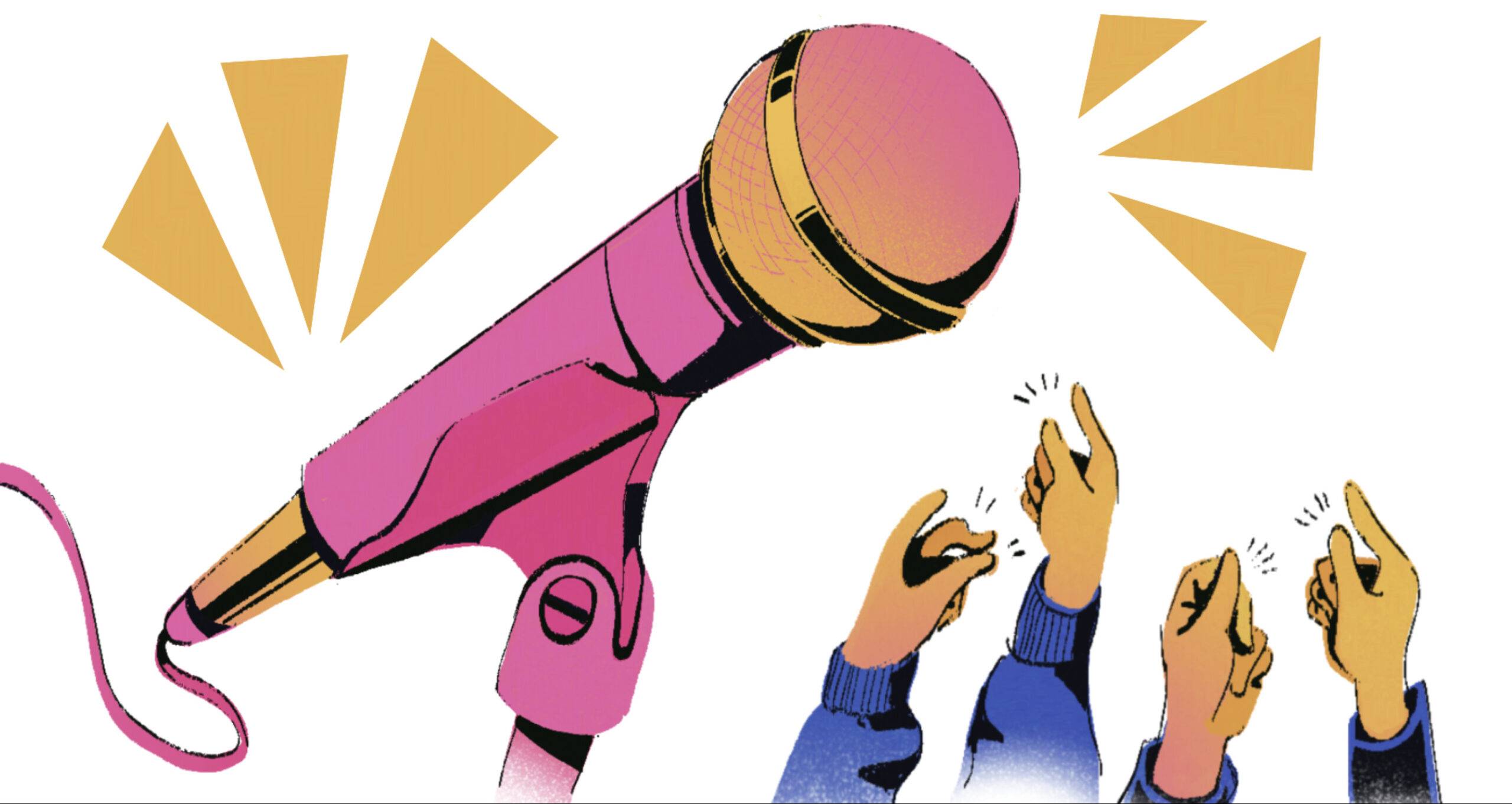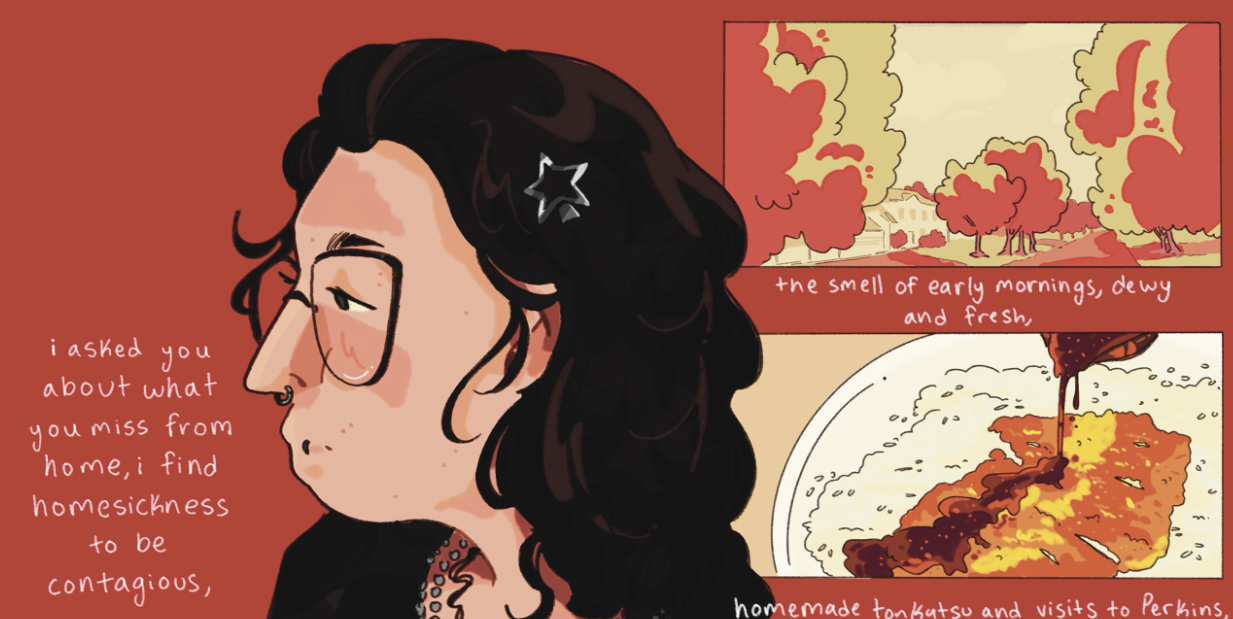
On March 20, students from the School of the Art Institute of Chicago and Columbia College came together for a daytime vigil in honor of those killed in Palestine. The event, which took place near 280 Columbus St., was a collaboration between students of different backgrounds and identities.
Similar events have become regular occurrences on SAIC’s campus since Oct. 7, 2023, as students use the resources available to them to expand their solidarity with Palestine and pressure the school to take a stand against genocide. From designing and distributing political flyers and hosting film screenings to joining marches in the streets, SAIC students are setting a prime example of what collaborative student activism can look like and how it can foster a sense of community and spaces for caring and solidarity.
This begs the question: Why are members of SAIC’s most vulnerable population — students — taking the sole responsibility for supporting Palestinian and Arab students? Why has the school’s administration been silent and not taken a direct stance in regards to the safety of and care for Palestinian and Arab students? Why hasn’t the school recently organized anything to address the pain, suffering, and trauma caused by the current genocide? (The last time the school organized an event where they addressed the war was at the end of January.)
The answers to these questions are complex, and the problem is not unique to SAIC. In the aftermath of the war, several college institutions have chosen to remain neutral. Though the intent of claiming neutrality is to not get involved, the impact of neutrality is erasure and invisibility, and even punishment of those who choose to not remain neutral. Faculty and students at other universities who have expressed solidarity with Palestine have faced serious repercussions.
SAIC’s administration has not publicly acknowledged the war as a genocide. The word “conflict” has been used, which negates the seriousness of the matter, suggesting that both parties are equal and in conflict. This is not the case here.
For Muslim, Palestinian, and Arab students, the past few months have been a nightmare. The overt brutality, and daily personal loss experienced by students, faculty, and staff, is unimaginably painful. The trauma inflicted by the Israeli government perpetrating this violence will take years to heal. The biggest international courts in The Hague cannot provide adequate justice.
So, the least anyone, including the SAIC administration, can do is to acknowledge this pain and create a safe space where those affected by genocide can grieve and come together without having to petition for help. This responsibility should not primarily fall on students, who are already vulnerable and have limited resources. Moreover, this is needed to support the well-being of students. Taking a stance is about sincerity and transparency.
Many students at SAIC have relocated here from their homes and families in pursuit of education and artistic endeavors. They often rely on SAIC as a sanctuary, a surrogate home in a new city where they have limited avenues for support. When the school fails to address students’ needs, a sense of belonging is not experienced, while feelings of exclusion and isolation start to deepen.
Some students express frustration and disappointment as they experience neglect from the administration, because of lack of acknowledgement of their pain. These discontents are responded to with protests and students calling for accountability through the creation of more nurturing environments within SAIC.
It wouldn’t be wrong to say that SAIC’s mission to create an environment for the expression of diverse ideas and acknowledgement of diverse histories isn’t being accomplished.
There’s a lot that needs to be done and undone at SAIC. Reaching out to students affected by genocide and validating their feelings is the first step. Students who have been coming together since Oct. 7, 2023, are an example and a lesson for SAIC administration and its community. More actions — art shows, weekly lectures, poetry, readings, etc. within the school — focused on Palestine and Indigenous movements worldwide — are needed.
The school should also actively organize events that acknowledge the rise of anti-Semitism in the country, and reach out to Jewish students who are more vulnerable now, because we know people who support genocide are often also racist, sexist, and antisemitic.
We don’t know when the genocide will end. We don’t know when the Palestinians will return to their homes, or if they ever will. (According to the United Nations Satellite Center, 35% of Gaza’s buildings were destroyed or damaged as a result of this war.) But what we do know is that the distress is real. It will remain with students and in the SAIC community but how it remains we can’t predict. It is time for SAIC administration to be present for their most vulnerable students in every way possible by not allowing the needs of students to be overlooked.
Editor’s note: (This editorial was written before April 1, when SAIC announced that it was celebrating Arab American Heritage Month. The school has planned several film screenings in April that will focus on the stories and histories of Palestinians.)







